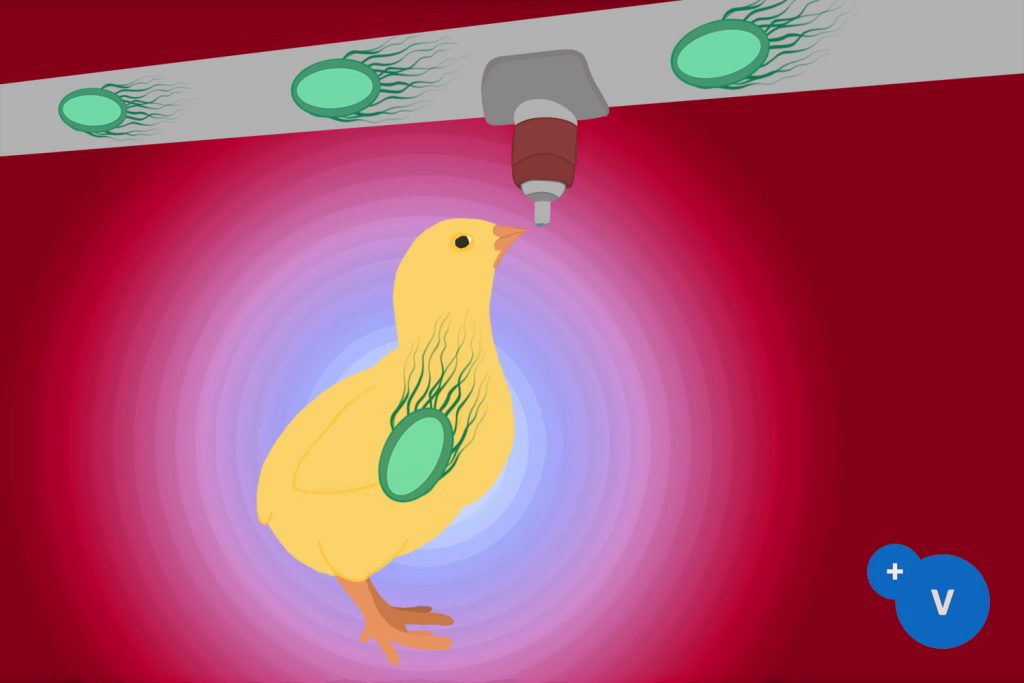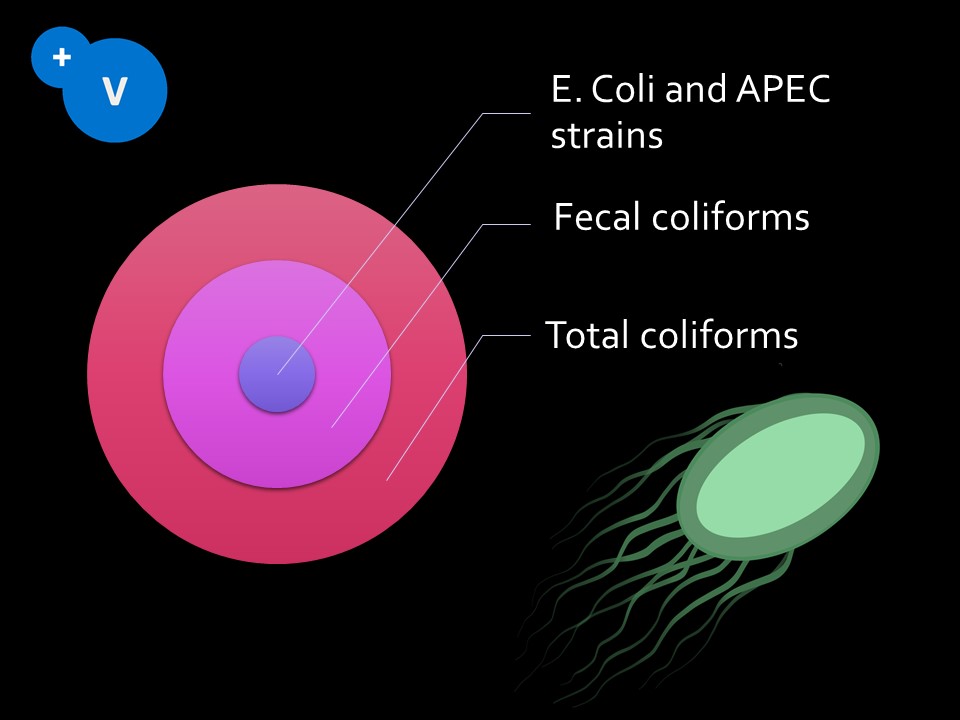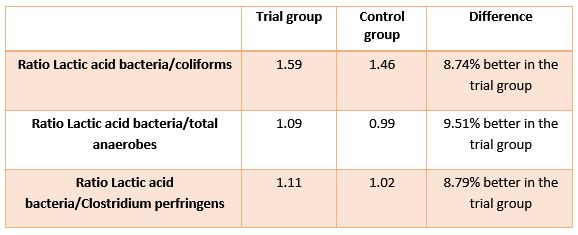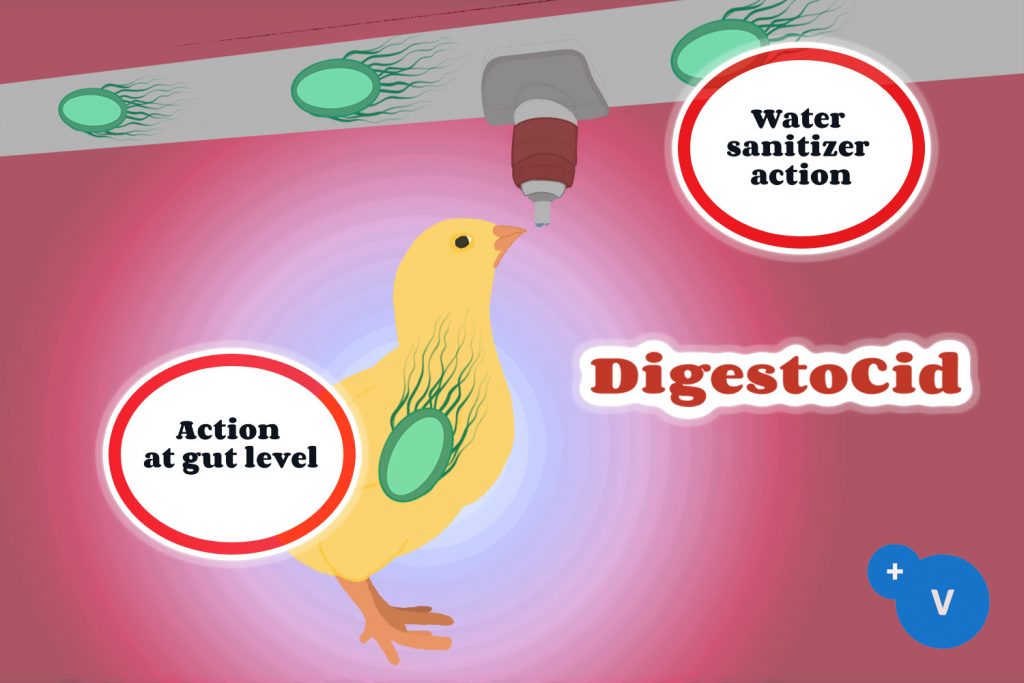23 Nov Contaminated drinking water as a risk factor for colibacilosis

As we explained in this article, overgrowth of Avian Pathogenic Escherichia Coli (APEC) in the digestive system is the second most important route of entry of APEC into the body of the bird. Therefore, avoiding the colonization of the digestive system by APEC is key to prevent colibacilosis.
Drinking water as a transmission agent of poultry diseases
Drinking water plays a particularly important role in the dissemination of certain diseases, especially those with a fecal-oral transmission. All around the world, drinking water supply sources are becoming increasingly contaminated because of growing urbanization or due to inadequate disposal of residues of livestock production.
Waterborne diseases are especially worrisome in poultry breeding as one single water source is used by thousands of animals; therefore, the quality of drinking water should be considered a priority in the poultry operations.
Most waterborne microorganisms are not able to multiply in drinking water; however, water is a vehicle for these microorganisms to reach the birds and start infections. Bacteria (Avian Pathogenic Escherichia Coli, Mycoplasma gallisepticum, Pasteurella multocida, Salmonella gallinarum, Haemophilus paragallinarum), virus (Newcastle Disease Virus, Infectious Bronchitis Virus, Avian Encephalomyelitis Virus, Infectious Bursal Disease Virus) and protozoa (Histomonas, coccidia) all can be transmitted through contaminated drinking water.
Besides microbial quality of the water itself, two other important factors must be taken in account:
- The hygiene of the pipe system, paying special attention to the cleanliness of the drinking nipples and to the formation of biofilms.
- The mineral content of water. Hard water contains high amounts of minerals that can precipitate, and precipitates may lead to the formation of biofilms. On the other hand, a high content of phosphorus and nitrogen promotes the growth of algae and bacteria on the inner surfaces of the pipes.
Contamination of drinking water by coliforms
According to several studies, 40-70% of the water sources (depending on the region) around the world are contaminated by coliforms. Coliforms are rod-shaped, Gram-negative non-spore-forming bacteria that are common in the feces of all warm-blooded animals, water, soil, and plants.
Fecal coliforms are a group of coliforms that live in the digestive tract of warm-blooded animals. Escherichia coli is the most important specie in the fecal coliform group. The presence of fecal coliforms in drinking water is not directly harmful, but it is an indicator that there may be fecal pathogens, including E. coli and APEC.
Fecal coliforms come from human or animal waste and arrive to water sources during natural weather phenomena like rainfalls, or accidentally through spillages from sewage. The presence of E. coli in drinking water is an evidence of a recent contamination by sewage or animal waste.

Maximum limits of microbial contamination in drinking water, including coliforms
Total Aerobic Bacteria
Total Aerobic Bacteria is used as an indicator of system cleanliness; a high count does not necessarily mean that the bacteria present in water is harmful, but it does mean that the system is not strong enough to prevent bacterial contamination. On the other hand, high bacterial levels can impact the taste of water, resulting in water rejection.
The closer the result of total anaerobic bacteria is to 0 CFU/ml, the better the quality of the drinking water. If the result is more than 1000 CFU/ml, it is advised to clean the water system. If the result is more than 10,000 CFU/ml, it is advised to perform a complete disinfection between batches and to review the cleaning and disinfection programs of the farm.
Total coliforms
If the water sample is positive to total coliforms and not to fecal coliforms, the source of the contamination is probably environmental and fecal contamination is unlikely. However, it is a warning sign: if environmental contamination can enter the system, pathogens could enter too.
The closer the result is to 0 CFU/ml, the better the quality of the drinking water. If the result is more than 50 CFU/ml, the drinking water system needs urgent cleaning and disinfection.
Fecal coliforms
The result must be 0 CFU/ml (not detected). If fecal coliforms are detected, the drinking water system needs urgent cleaning and disinfection.
To perform a thoroughly investigation of the microbial quality of the drinking water in the farm, it is advised to:
- Take a water sample from the end of the line.
- Sample the surfaces inside the pipes with a swab, to check the presence of bacteria and biofilms on the walls of the pipes.
Drinking water should be tested and monitored regularly. We at PlusVet Animal Health perform water analysis services for our customers.
Using DigestoCid© to reduce bacterial and E. coli counts in drinking water
In order to maintain water microbial quality, it is advisable to use some form of water sanitization. The most common method is chlorination, but many other options exist, such as ozone, chlorine dioxide, UV light, etc.
Acidification of drinking water is a complement to water sanitation. The purpose of lowering the pH of drinking water is to create an environment where the pathogens cannot grow.
Our acidifier, DigestoCid©, contains a synergistic combination of organic acids, monoester fatty acids and phytogenics with a wide spectrum of action, allowing a better antibacterial and antifungal effectiveness at a less acidic pH (5.5-6.5).
In our laboratory, DigestoCid© has demonstrated to be able to reduce the amount of total aerobic bacteria in drinking water: A sample of drinking water obtained from a poultry farm was divided into three equal aliquots. DigestoCid© at 1 ml/L and 2 ml/L was added to aliquot 1 and 2 respectively and the third aliquot was taken as control. After 24 h at room temperature, the aliquot containing DigestoCid© at 1 ml/L had 93.7% bacterial counts lower than control and the aliquot containing DigestoCid© at 2 ml/L had 99.9% bacterial counts lower than control.

In another laboratory trial that we published here, DigestoCid© was more effective than two competitors at inhibiting E. coli, showing the lowest Minimum Inhibitory Concentration and Minimum Bactericidal Concentration.

What’s more important, the use of DigestoCid© has been proven to reduce the proportion of coliforms in the jejunum of poultry. In this trial with caged broilers, after administering DigestoCid© during the grower and finisher stage, the ratio lactic acid bacteria/coliforms improved 8.74% compared to the blank group.

With the data we have obtained until now, it can be concluded that adding DigestoCid© is effective to improve the microbial quality of drinking water because it reduces the total aerobic bacteria count and it has bacteriostatic and bactericidal effect against E. coli. At the same time, DigestoCid© is able to reduce the proportion of coliforms in the gut flora.
The use of DigestoCid© to reduce water bacterial contamination and the load of E. coli in the gut flora is part of a successful plan to prevent colibacilosis in poultry farms.

Product of choice
DigestoCid© is indicated as an acidifier, sanitizer of drinking water and to improve intestinal health in poultry and pigs of all ages. It contains:
- Buffered organic acids, which reduce the pH of the water and inhibit the growth of Gram-negative bacteria.
- Monoester fatty acids, also called medium chain fatty acids, which inhibit the growth of Gram-negative and Gram-positive bacteria. In addition, they have antiviral effects.
- Essential oils and phytochemicals with antibacterial, antifungal, antiviral and antioxidant properties.
DigestoCid© has a broader spectrum of action than products based solely on organic acids, allowing superior antibacterial and antifungal efficacy at a less acidic pH (5.5-6.5).

Certain health statements may not be applicable in your region.

